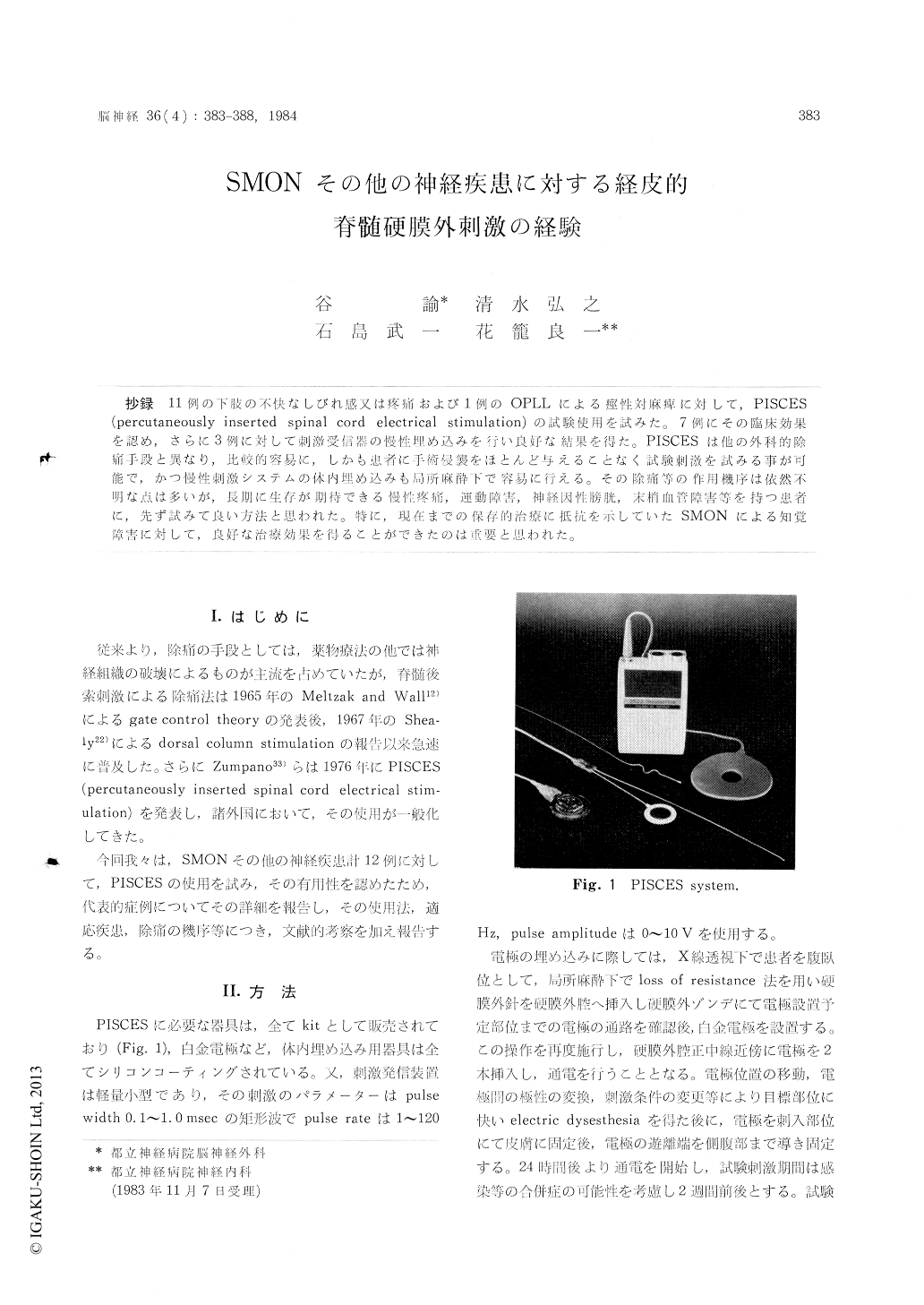Japanese
English
- 有料閲覧
- Abstract 文献概要
- 1ページ目 Look Inside
抄録 11例の下肢の不快なしびれ感又は疼痛および1例のOPLLによる痙性対麻痺に対して,PISCES(percutaneously inserted spinal cord electrical stimulation)の試験使用を試みた。7例にその臨床効果を認め,さらに3例に対して刺激受信器の慢性埋め込みを行い良好な結果を得た。PISCESは他の外科的除痛手段と異なり,比較的容易に,しかも患者に手術侵襲をほとんど与えることなく試験刺激を試みる事が可能で,かつ慢性刺激システムの体内埋め込みも局所麻酔下で容易に行える。その除痛等の作用機序は依然不明な点は多いが,長期に生存が期待できる慢性疼痛,運動障害,神経因性膀胱,末梢血管障害等を持つ患者に,先ず試みて良い方法と思われた。特に,現在までの保存的治療に抵抗を示していたSMONによる知覚障害に対して,良好な治療効果を得ることができたのは重要と思われた。
Percutaneously inserted spinal cord electrical stimulation (PISCES) was carried out in eleven intractable pain cases and in one spastic paraplegic case. The causes of intractable pain constitute subacute myelo-optic neuropathy (SMON) 6 cases, cerebrovascular disease 2 cases, multiple sclerosis (MS) 1 case, Charcot-Marie-Tooth (CMT) 1 case and transverse myelitis (TM) 1 case. The cause of spastic paraplegia was due to the ossification of posterior longitudinal ligament (OPLL).
A trial stimulation was performed about two weeks before planning a permanent implantation of PISCES system. For the trial stimulation, epi-dural electrodes were percutaneously inserted with a guide of fluoroscopy in a X-ray room. The con-ditions of stimulation were adjusted to give an optimal electric dysesthesia. We employed pulse width 0.1-1.0 msec, pulse rate 1-120 Hz and pulse amplitude 0-10 Volt. If an excellent effect was obtained by trial study, we proceeded to the chronic implantation of PISCES system which were composed of epidural electrodes, a subcuta-neous receiver and a surface antenna. The proce-dure of implantation was carried out in an opera-ting room under local anesthesia. In our series, seven subjects (58%) experienced a rewarding effect by the trial stimulation and three underwent the parmanent implantation of PISCES. We sum-marized the clinical courses of these three cases which were OPLL, CMT and SMON.
Compared with the other methods for pain relief, PISCES is most characteristic in its safety and simplicity. To date, PISCES has been applied to various disorders; such as ataxia, spasticity, in-tractable pain, neurogenic bladder and peripheral vascular disease. But its efficacy has not been established in all these disorders.
According to our experiences, PISCES is most effective in relieving chronic pain. SMON causes characteristic unbearable dysethesia in lower limbs and various methods have been applied to this distress in vain. Our series have shown that PIS-CES is worth trying in SMON cases.
The precise mechanisms of PISCES effect remain to elucidate, but this simple technique should be tried first before other invasive surgical methods.

Copyright © 1984, Igaku-Shoin Ltd. All rights reserved.


